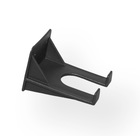Improving compressions
Want to watch this video? Sign up for the course
or enter your email below to watch one free video.
Unlock This Video Now for FREE
This video is normally available to paying customers.
You may unlock this video for FREE. Enter your email address for instant access AND to receive ongoing updates and special discounts related to this topic.
Optimising CPR Performance: Positioning, Depth, and Communication
Effective CPR performance is essential for maximizing the chances of survival in cardiac arrest victims. Understanding optimal positioning, compression depth, and communication can help improve CPR outcomes.
Positioning for CPR
Though the optimum position for providing CPR is by the side of the victim, compressions can also be given:
- Over the head in confined spaces, such as an aeroplane or bus aisle.
Compression Depth and Speed
To ensure effective CPR:
- Compress the chest to a depth of 5cm to 6cm.
- Perform compressions at a rate of 100-120 per minute.
- Avoid exceeding two compressions per second.
Minimizing Pauses in Chest Compressions
Keep interruptions to a minimum by:
- Reducing pauses between compressions to less than 10 seconds.
- Communicating well with rescuers during CPR.
Importance of Chest Recoil
Remember to:
- Allow the chest to fully recoil after each compression.
- Consider the recoil time as important as the compression time.
Changing Rescuers
To maintain optimal compression depth:
- Change rescuers every two minutes, if possible.
- Avoid interruptions in chest compressions while changing rescuers.
Practice Makes Perfect
Improve your CPR skills by:
- Practising on a manikin, toy, or stuffed bag.
Learning Outcomes:
- IPOSi Unit four LO3.1, 3.2 & 3.3
- IPOSi Unit two LO1.2, 1.3, 1.4, 2.1, 2.2 & 2.3
Recommended Products For You
Lifesaver Kit with Tourni-Key - Black
£85.00 + VAT
Lifesaver Kit with Tourniquet - Red
£99.00 + VAT
WoundClot Trauma 8cm x 100cm
£39.95 + VAT
Lifesaver Kit with Tourniquet - Black
£99.00 + VAT
iPAD SPR Semi Automatic Defibrillator
£925.00 + VAT
Lifesaver Kit Ultra - Green
£99.00 + VAT
Lifesaver Kit Ultra - Red
£99.00 + VAT
First Aid Box Wall Bracket (Single)
£0.35 + VAT


_-Trauma_8x100_CE.jpg)




